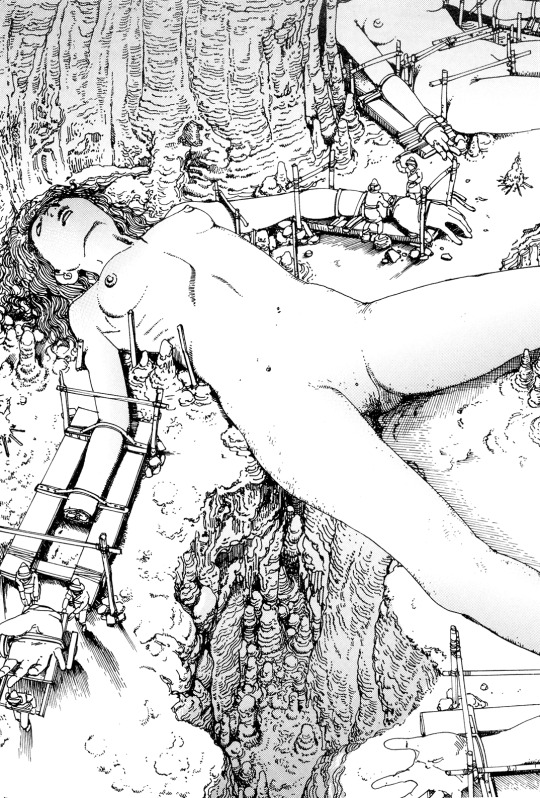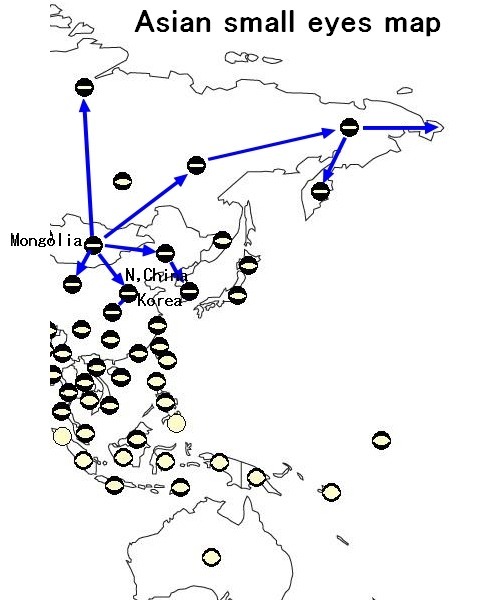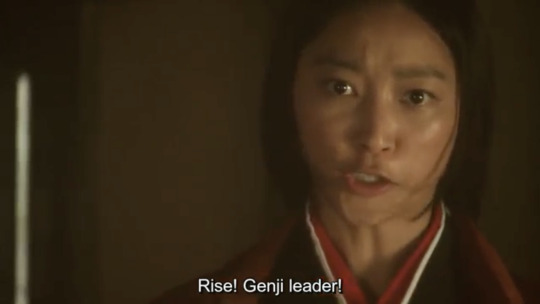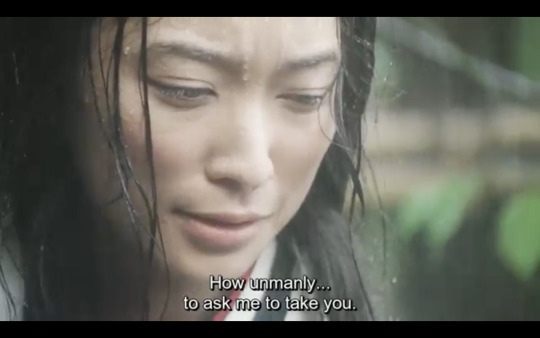#mongol invasion
Text
The House of Wisdom
I know people get annoyed about the destruction of the Library of Alexandria, but I think they should also be upset about what the Mongols did to the House of Wisdom.
Founded in the late 8th century, also known as the Islamic Golden Age, the House of Wisdom was a public library, observatory and academy located in what is now Baghdad, Iraq. There were rare books and Arabic poems, and plenty of translations of texts from Arabic, Syriac, Chinese, Sanskrit and Greek. Research was conducted and scholars had access to information from India, Greece and Persia. Scholars could study astronomy, maths, medicine, science and philosophy. Some of the astronomers worked on improving the astrolabe, which was used by Muslims to find Mecca and could also help travellers plan their journeys.
The House of Wisdom was in Baghdad, which at the time was the capital of the Abbasid Caliphate. This meant that plenty of people, including scholars, would visit the city. Some notable examples are al-Jahiz (who lived to be 89, and apparently died when a stack of books fell on him); al-Kindi (the father of Arab philosophy) and al-Ghazali (a Mujaddid who wrote "The Incoherence of Philosphers"). al-Jahiz taught at the university and wrote there. In one of his books he discusses evolution and argued that dogs, wolves, foxes etc probably shared a common ancestor with four legs and a tail. One scholar, al-Ma-mun, put together the most detailed map of the Earth (for its time - it looks like North Africa, Europe and parts of Asia to me. https://www.pinterest.co.uk/pin/486177722268804983/ ).
The Mongols destroyed the House of Wisdom in 1258 when they sieged the city. Hulegn, the grandson of Ghengis Khan, attacked the city and destroyed hospitals, mosques and libraries. The attackers threw all of the books into the Tigris river. Legend says that for days afterwards the river water was turned black with ink and red with blood.
#the house of wisdom#the library of alexandria#baghdad#iraq#islamic golden age#mongol invasion#ghengis khan#hulegn#al-jahiz#al-kindi#al-ghazali#islamic scholars#muslim scholars#history
3 notes
·
View notes
Photo

Gunpowder and the Beginning of the End of Medieval Warfare
An original essay of Lucas Del Rio
Warfare has a long history, for it is as old as civilization and perhaps has roots in the hunter-gatherer societies that predate cities and large-scale agriculture. Organized violence, whether between or within societies, is truly ancient, and it has existed at different times in every corner of the globe. Given the diversity of times and places wars have been fought, it should come as no surprise that warfare itself has been just as diverse in these countless settings. Medieval warfare, consequently, had many characteristics. For much of the medieval era, there were occasional innovations in tactics and weaponry, just as there had been in ancient times. The Greeks and Romans had developed the military formations known as the phalanx and the legion, respectively, whereas the ancient Chinese invented the crossbow. In the Middle Ages, Greek fire was invented in the 600s, bearded axes in the 1000s, longswords in the 1200s, and halberds in the 1300s, among others. No medieval military innovation, however, and perhaps no weaponry invented in any earlier eras, was as significant as gunpowder. Once gunpowder was being utilized on the battlefield, all aspects of medieval warfare, and all that preceded it, were being challenged. This story does not begin in Europe, but rather in the land known as China that was then mysterious to Europeans.
The original form of gunpowder was black powder, which was a mixture of charcoal, potassium nitrate, and sulfur. No one knows for certain exactly when black powder was developed, but it may have been as early as the 700s. It is also unknown who the inventor was, although historians believe it was the work of alchemists. Both Europeans and the Chinese had been practicing alchemy, a pseudoscience that would eventually lead to the more serious discipline known as chemistry, for centuries prior to the discovery of gunpowder. Whereas European alchemists were interested in finding a way to artificially manufacture gold, their Chinese counterparts wished to create an elixir that would grant eternal life in the same way that there were elixirs which could cure ailments. Gunpowder was probably first created when the Tang Dynasty ruled China. In 804, a description of the process to make gunpowder was written down by Qing Xuzi. During the years that followed, the Chinese would begin to use gunpowder in fireworks, which had already existed in China for many centuries using more rudimentary compounds. Weaponry that would harness gunpowder would come next.
It would be during the Song Dynasty that China, long one of the most advanced societies in the world, would face a genuine threat to its existence. While the Mongol conquest of China would not occur until 1234, the Chinese were already having to repel Mongols and other attackers in the 900s. Prior to using it in lethal weaponry, the Chinese found that the sound of gunpowder in paper bombs could cause panic during battles amongst enemy warriors. Later, the Chinese harnessed the explosive potential of gunpowder by launching primitive bombs with bows and arrows or catapults. They would continue to innovate by using the compound in the earliest forms of more modern weapons such as flamethrowers, grenades, mines, and even poison gas. To cement their technological advantage, China stopped exporting its chemical components in 1076. The Chinese did not cease to find new ways for their armies to effectively make use of gunpowder. After having previously only invented weapons that employed gunpowder as an explosive, the next step would be its usage as a propellant.
By the 1100s, they were manufacturing a weapon that they called the huo qiang, which translates into a “fire lance.” These armaments were simple guns made from tubes of bamboo, later replaced by metal, that could fire arrows or the earliest bullets. However, their effectiveness was minimal compared to later firearms because they could not shoot their projectiles very long distances and had the disadvantage of releasing an excessive quantity of smoke. Some of these inventions were more valuable than others, and many, including the fire lance, were precursors to greatly improved weapons. Their attempt to forever keep this advantage exclusive would be futile, however. In 1211, Genghis Khan, a Mongol leader, invaded China and proved immensely more successful than his predecessors. While there is minimal evidence that the Mongols adopted gunpowder under his leadership, there is better documentation of them employing it after he died in 1227. Gunpowder enabled the Mongols to capture Kaifeng, then the capital of China. The usage of this new form of weaponry was clearly spreading throughout Asia. Next to come was its adoption further west.
How gunpowder reached Europe and started to be used in its wars in unknown, although there are theories. One such belief is that Europeans learned about the new technology from the Mongols, who invaded the continent in the early 1200s. As the Arabs learned to use gunpowder around this time, possibly through trade routes, it has also been hypothesized that they were the ones who introduced it to Europe. While it might not be known who brought gunpowder to the west, the technology must have arrived by 1267, when its existence was documented by English philosopher Roger Bacon. Europeans would not take long to adopt the new weaponry, as evidenced by Italian cities in the 1300s building freshly developed forms of artillery and ammunition. Medieval European battlefields were soon lit up by detonating gunpowder, filled with clouds of smoke, and shook by the impacts of cannonballs. Archaic siege weapons such as ballistas and catapults had long been useful for the purpose of tearing down fortifications. Now, large metal cylinders ejecting round pieces ammunition at great speed could determine the outcome of a battle in the open field.
Warfare had already been changed time and time again by military innovations. However, it destroyed the way that wars had traditionally been fought. The first change, brought upon by cannons, was the end of the importance of castles. Humans had built forts and walls for thousands of years, and medieval castles were the perfect combination of the two. Before cannons, destroying stone walls was very difficult. Attackers often had to resort to building battering rams or siege towers, both of which had to reach the walls themselves in order to be used and whose crews were vulnerable to archers. A cannon, on the other hand, could make such a wall crumble from an enormous distance. Constantinople itself fell to the “gunpowder empire” of the Ottomans in part due to such artillery.
Once there were firearms that could be carried and fired by individual soldiers, battles would never be the same. An early firearm of this kind, developed by the Spaniards in the 1400s, was the arquebus. After another century, muskets would follow. Guns like these could kill from a distance and easily penetrate metal armor. Soldiers wielding melee weapons that had dominated warfare for millennia now faced hopeless prospects in the face of volleys of bullets. A new era had begun, and wars would not again see changes so immense until the First World War.
#alchemy#asia#chemistry#china#civilization#essay#europe#history#medieval#medieval warfare#middle ages#middle east#military science#mongol empire#mongol invasion#society#technology#war#warfare#world
5 notes
·
View notes
Text
The Uses of History, 19 – Russia the Long-Suffering, 1 – Muscovy to Catherine the Great
Image – Peter the Great Statue in Moscow, credit Wikipedia)
The first reason to note as to why some attention to Russian history at this time is wise should be obvious to anyone who pays attention to what’s going on in the world in 2023: Russia invaded its near neighbour, Ukraine, just about a year ago as I write this. This invasion is the first major near-peer-to-peer full-blown war in Europe…

View On WordPress
#Catherine the Great#Ivan III of Moscow#Ivan the Terrible#Kievan Rus#Kiyvan Rus#Mongol invasion#Patriarch of Moscow#Peter the Great#Russian Orthodox Church#Third Rome#Varangians#Vladimir of Kiev
0 notes
Text
are the hot springs only in the game to show jin but booty naked with fully rendered ass cheeks or
#playing the hit game the ghost of tsushima rn#loving this game btw its vv gorgeous but im getting my ass beat everywhere i go :[#i mean im not complaining if i come across a hot spring but bro is out here double cheeked up during the mongol invasion#jin sakai
33 notes
·
View notes
Photo

shintarou kago’s the ultra power mongol invasion || 駕籠真太郎の『超動力蒙古大襲来』
#shintarou kago#駕籠真太郎#choudouryoku mouko daishuurai#the ultra power mongol invasion#超動力蒙古大襲来#b&w#mangacap
61 notes
·
View notes
Text
The Mongols were feared for their horsemanship while the Samurai were master swordsmen. Who would be the final victors?
44 notes
·
View notes
Text
youtube
What a Samurai vs Mongol battle really looked like
from History Dose
20 notes
·
View notes
Text
the only video game i play like consistently is crusader kings 3 currently it's so fun i love creating family drama and alternative history created a massive empire out of georgia and then after building it up i switched to another character to play as to also build up while watching to see if the empire i made would fall apart or not
4 notes
·
View notes
Text


Average Human Eye Size Map
#small eyes#asian eyes#tungusic peoples#mongolian#mongol empire#siberian#russia#northern chinese#korean#kpop#Immigrant Invasion#study abroad#information#sightseeing#travel#trip
1 note
·
View note
Text
The butterfly effect is wild like wdym that the Mongol invasions indirectly brought about the Percy Jackson series
#percy jackson#to explain a bit#the mongol invasion opened up trade in the region because of how wide they spread#but that also brought about new diseases#that disease was the bubonic plague#after the plague was gone#knowledge qas starting to be sought after again#this led to the renaissance#Francessco Petrarch was a man living in the renaissance#he translated Ancient Greek and Roman myths into an understandable language#and what was inspired by mythology?#that’s right! Percy Jackson
2 notes
·
View notes
Text
Starting to question if there's any supernatural shit going on or if this is a fairly "grounded" game 🤔 on one hand I started the legends mode and that's very explicitly supernatural, and there's mentions of oni throught the story of the game but that feels more in a mythological sense than in the literal oni you fight in legends
#gui plays ghost of tsushima#if it wasn't for the legends mode I'd just assume it's all mythology but????#when you literally confirm there's supernatural elements in your setting while alsotrying to tell a somewhat grounded historical fantasy#feels like an odd call LOL#they could've maybe made the legends mode conceit as you playing through the several myths of the game#but they make it pretty clear that the oni broke free because of the mongol invasion
2 notes
·
View notes
Text
Constatation évidente que La troisième guerre mondiale approche rapidement
La guerre en Ukraine connaît-elle ses dernières convulsions avant que l’armée ukrainienne ne soit anéantie par la puissance de feu russe ? Le parti d’opposition à la guerre en Ukraine aux États-Unis, désormais incarné par Tucker Carlson et son nouveau copain Victor Orban de Hongrie, les Trumpistes et certains médias alternatifs, Scott Ritter etc. tous chantent la fin de la guerre en Ukraine est…

View On WordPress
#conspiration#crime organisé#Défenseurs de la Terre#Illuminati#Invasion mongole du Japon#Michel Duchaine#Politique#Sociétés secrètes#Troisième Guerre Mondiale
2 notes
·
View notes
Photo

Putin is using old tsarist and Communist boundaries to justify his imperialistic attempt to take over Ukraine.
But if Putin chooses to use 18th through 20th century maps to claim Ukraine, there’s nothing to stop the Mongols from from doing the same to reclaim much of Russia.

What Putin fails to understand is that Russia would have more influence if it acted like a normal country rather than like a kleptocratic fascist aggressor.
Putin is no Peter the Great, he’s more like Saddam Hussein with nukes.
The Soviet Union is DEAD DEAD DEAD and nobody other than a cohort of nostalgic “ватники“ inside Russia would like to see it return.
#invasion of ukraine#tsarist#russia#imperialism#communism#vladimir putin#war of agression#nostalgia#soviet union#ватники#россия#mongols#золотая орда#монголы#владимир путин#путин хуйло#союз постсоветских клептократических ватников#слава україні!#dave whamond
35 notes
·
View notes
Text
We need Ryuzo back for a sequel so the reunion with Jin can be angsty as hell.
#if they would ever meet though#the shogun would want ryuzo's dead ass too#or he could cooperate with them#since ya know#ryuzo would have knowledge about Mongol battle tactics that they would want him to share#we're talking about the Mongol invasion that happened seven years later btw#and he could also use it as an excuse to get close to Jin#i just want Ryuzo to look at the Mongol warlord in the eyes and say:#'On this island there's only one warrior I cannot defeat. But it isn't you.'#ryuzo#ghost of tsushima#please Suckerpunch#just bring him back in some way
7 notes
·
View notes
Photo







Taira no Kiyomori (Ep 41)
Minamoto no Yoritomo is weathered and heartbroken by the tragedies of life in losing his family, wife and child that he resigned to his fate as a prisoner of his enemy, living in exile in a far away place from the capital, Kyoto.
But the warrior like Hojo Masako is not having it as she could not bear to see someone with a potential and legitimate claim to the Genji Clan, giving up and spending the rest of his younger days rotting away into nothingness.
Yoritomo was agitated as she does not know how painful it is to lose everything he holds so dearly and how terrifying and powerful Kiyomori is that he is able to kill his child without even being there.
She changed approach and began asking about his father whom he admired as a strong Samurai. While telling the tales of his father, he realizes what he has become and what his father would say if he were there with him.
He finally decides to change his destiny and pleaded her to show him the way as he is truly lost, to which she agreed and raised a sword for him. She rejected her father’s marriage arrangement to marry Yoritomo.







Years later, they will establish the first Samurai Rule of the Kamakura Shogunate. And many years later, her descendant, Hojo Tokimune, would led the defense of Japan against the Mongol Invasion.
#taira no kiyomori#minamoto no yoritomo#okada masaki#hojo masako#watanabe anne#taiga drama#historical drama#japanese drama#j drama#jdrama#dorama#japan#samurai#kamakura shogunate#hojo tokimune#mongol invasion of japan
13 notes
·
View notes
Photo

shintarou kago’s the ultra power mongol invasion || 駕籠真太郎の『超動力蒙古大襲来』
#shintarou kago#駕籠真太郎#choudouryoku mouko daishuurai#the ultra power mongol invasion#超動力蒙古大襲来#b&w#mangacap
107 notes
·
View notes